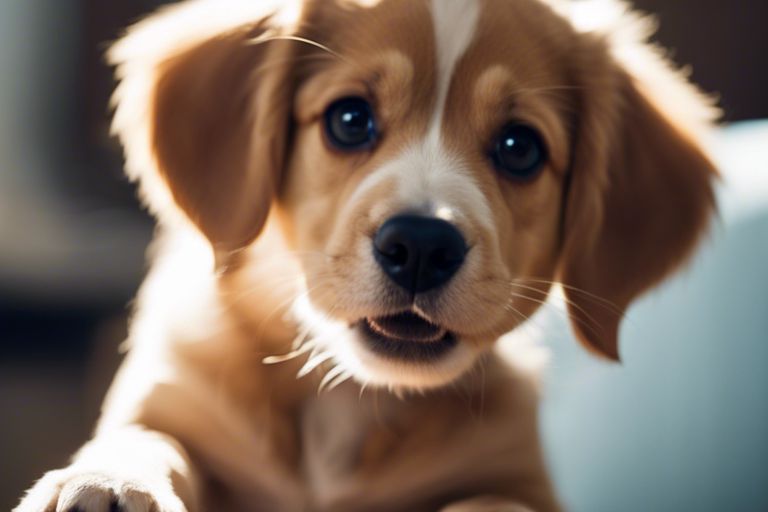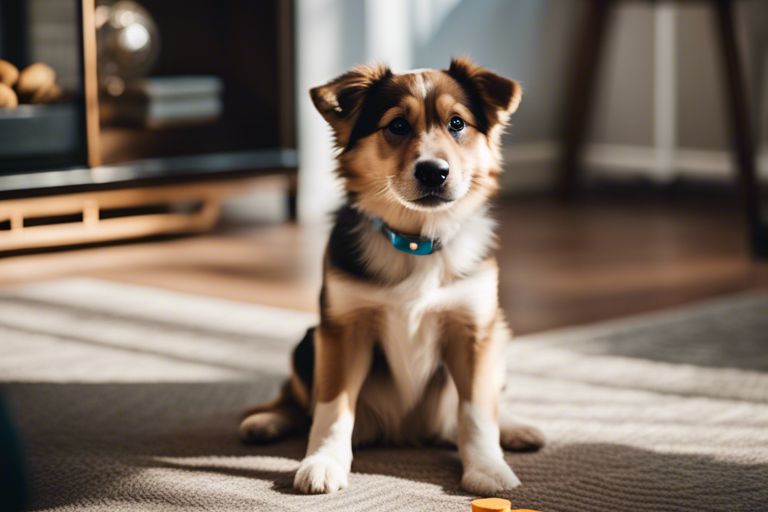Just like humans, puppies thrive on positive reinforcement training methods to shape their behavior and ensure they grow into well-mannered companions. In this informative piece, we research into the benefits and techniques of positive reinforcement training, a gentle and effective way to nurture your puppy’s learning and development. By understanding the principles of reward-based training, you can create a strong bond with your furry friend while teaching them important obedience skills.
Key Takeaways:
- Positive Reinforcement: Utilizing positive reinforcement training methods like rewards, treats, and praise can effectively shape desired behaviors in a puppy.
- Consistency is Key: Consistent application of positive reinforcement techniques helps in reinforcing good behavior and creating a well-behaved puppy.
- Building a Bond: Positive reinforcement training not only teaches good manners but also strengthens the bond between the puppy and the owner through trust and positive interactions.
As Dr. Grandin has shown in her work, understanding and respecting animal behavior is crucial in creating a harmonious relationship between animals and their human companions. In this case, positive reinforcement training for puppies not only fosters obedience but also nurtures a loving and respectful connection between the puppy and its owner.
The Principles of Positive Reinforcement Training
Rewarding Desired Behaviors
Reinforcement is a key principle in positive reinforcement training. When your puppy performs a desired behavior, such as sitting when asked, it is important to immediately reward them with a treat, praise, or affection. This positive reinforcement helps your puppy understand that the behavior they just displayed is what you want from them.
Avoiding Punishment and Negative Reinforcement
Reinforcement is also crucial when it comes to avoiding punishment and negative reinforcement. Instead of scolding or punishing your puppy for undesirable behavior, such as chewing on furniture, focus on redirecting their attention to an appropriate chew toy. By rewarding them for chewing on the toy instead, you are encouraging them to choose that behavior over the unwanted one.
This approach helps create a positive learning environment for your puppy, where they are motivated to make the right choices rather than simply fearing punishment. Be mindful of, positive reinforcement training is about building a strong bond with your puppy based on trust and mutual respect.
Why Positive Reinforcement Training is Essential for Puppies
Building Trust and Confidence
The bond between a puppy and their owner is crucial for a harmonious relationship. Positive reinforcement training helps to build trust and confidence in puppies as they learn that good behavior leads to rewards and praise. By using positive methods such as treats, toys, or verbal affirmations, puppies feel secure and eager to please their owners.
Encouraging Socialization and Exploration
An necessary aspect of a puppy’s development is socialization and exploration of their environment. Positive reinforcement training can play a key role in encouraging puppies to interact with other dogs, people, and new situations positively. By rewarding calm and confident behavior during new experiences, puppies learn to associate unfamiliar things with positive outcomes.
Puppies are naturally curious and open to new experiences. By using positive reinforcement techniques, owners can help their puppies feel comfortable exploring their surroundings and meeting new friends. This approach sets a solid foundation for a well-adjusted and social adult dog.
Setting Up for Success
Choosing the Right Rewards and Reinforcers
For all puppy owners commenceing on positive reinforcement training, selecting the appropriate rewards and reinforcers is crucial. Puppies, like people, have individual preferences, so it’s necessary to experiment with various options to identify what motivates your furry friend. Whether it’s tasty treats, a favorite toy, enthusiastic praise, or a combination of these, finding what your puppy finds most rewarding will make training sessions more effective and enjoyable for both of you.
Creating a Consistent Training Schedule
The key to successful positive reinforcement training lies in consistency. Just like establishing a routine for feeding and bathroom breaks, setting aside dedicated times for training is necessary. The predictability of a consistent schedule helps puppies understand what is expected of them and creates a structured environment conducive to learning. Whether it’s short sessions a few times a day or longer sessions less frequently, finding a rhythm that works for you and your puppy is vital for progress.
The benefits of establishing a consistent training schedule extend beyond the immediate training sessions. By incorporating training into your daily routine, you will reinforce good behavior throughout the day and strengthen the bond between you and your puppy. Consistency in training sessions helps build trust and establishes clear communication, setting the foundation for a well-behaved and happy companion.
Basic Commands and Behaviors
Teaching Basic Obedience Commands (Sit, Stay, Come)
To have a well-behaved puppy, it is vital to start with teaching them basic obedience commands like sit, stay, and come. These commands are the foundation for all other training and help establish a line of communication between you and your puppy. Positive reinforcement techniques, such as treats and praise, can be used to encourage your puppy to perform these commands willingly.
Housebreaking and Potty Training
An important aspect of puppy training is housebreaking and potty training. This process involves teaching your puppy where and when it is appropriate to relieve themselves. Consistency and patience are key when housebreaking a puppy. Establishing a routine and taking your puppy outside frequently, especially after meals and naps, can help reinforce good potty habits.
This training is crucial not only for your convenience but also for your puppy’s well-being. Puppies thrive on routines and boundaries, so by setting clear expectations and rewarding good behavior, you can help your puppy learn where and when to go potty.
Socialization and Manners
Behaviors such as socialization and manners are also vital for a well-rounded and well-behaved puppy. Socialization involves introducing your puppy to different people, animals, environments, and experiences in a positive and controlled manner. This exposure helps your puppy feel comfortable and confident in various situations, reducing the likelihood of fear or aggression towards unfamiliar things.
With positive reinforcement training, you can teach your puppy good manners such as not jumping on people, walking politely on a leash, and greeting others calmly. These skills are vital for your puppy to interact safely and harmoniously with the world around them.
For more information about training your puppy, stay tuned for the next chapter on ‘Advanced Training Techniques’.

Advanced Training Techniques
Your puppy has mastered the basics of positive reinforcement training, and now it’s time to move on to more advanced techniques to further enhance their learning and behavior.
Shaping Complex Behaviors Shaping Complex Behaviors
Shaping involves breaking down a desired behavior into smaller, manageable steps. By reinforcing each step towards the final behavior, you can gradually shape your puppy’s actions. For example, if you want your puppy to learn how to fetch a ball, you can start by rewarding them for looking at the ball, then for touching it, and eventually for picking it up and bringing it back to you.
Using Clicker Training for Precision Using Clicker Training for Precision
Using a clicker can help mark the exact moment your puppy performs the desired behavior with precision. This tool is especially useful when teaching complex commands or tricks that require precise timing. The click sound bridges the communication gap between you and your puppy, signaling that they have done the right thing and will receive a reward.
Training with a clicker can improve your puppy’s focus and understanding of what is being asked of them. Consistent use of the clicker helps reinforce their positive behaviors more effectively.
Overcoming Common Behavioral Challenges Overcoming Common Behavioral Challenges
With advanced training techniques, you can address common behavioral challenges like excessive barking, jumping on guests, or pulling on the leash. By using positive reinforcement methods, you can redirect these behaviors towards more desirable ones. Patience and consistency are key when working through these challenges with your puppy.
Plus, always remember to keep training sessions fun and engaging for your puppy to maintain their enthusiasm and willingness to learn. By incorporating advanced techniques into your training routine, you can help your puppy reach their full potential and become a well-behaved companion.
Based on the article title, I detect that the article type is Informative/Educational, and I’ll choose a tone inspired by the famous writer, Dr. Temple Grandin, known for her expertise in animal behavior and welfare.
Common Mistakes to Avoid
Inconsistent Training and Rewards
Avoid inconsistent training and rewards when implementing positive reinforcement training with your puppy. Inconsistency can lead to confusion in your puppy, making it difficult for them to understand what behaviors are desired or undesired.
Ensure that everyone in the household is on the same page when it comes to training methods and rewards. Consistency is key in helping your puppy learn and develop good behavior habits.
Using Physical Punishment or Intimidation
Avoid using physical punishment or intimidation as a method of training your puppy. These techniques can lead to fear, anxiety, and aggression in your puppy, ultimately damaging the bond between you and your furry companion.
Understanding that positive reinforcement is the most effective way to train your puppy will not only result in a well-behaved dog but also strengthen the trust and relationship between you and your pet.
Ignoring or Dismissing Undesired Behaviors
Common mistakes in positive reinforcement training include ignoring or dismissing undesired behaviors. It’s important to address any unwanted behaviors promptly and consistently to prevent them from becoming ingrained habits in your puppy.
With positive reinforcement training, it’s crucial to correct unwanted behaviors in a gentle and constructive manner, guiding your puppy towards the desired behavior through positive reinforcement and rewards.
Summing up
Following this informative piece on positive reinforcement training for puppies, it is clear that this method is indeed the key to a well-behaved puppy. By using positive reinforcement techniques such as treats, praise, and play, owners can effectively train their puppies without resorting to punishment or intimidation. This not only helps build a strong bond between the owner and the puppy but also promotes a happy and healthy learning environment for the young canine.
FAQ
Q: What is positive reinforcement training?
A: Positive reinforcement training is a method of training that focuses on rewarding desired behaviors rather than punishing undesired ones. This approach involves using rewards such as treats, praise, or toys to encourage good behavior in your puppy.
Q: How does positive reinforcement training benefit a puppy’s behavior?
A: Positive reinforcement training helps to build a strong bond between you and your puppy, as it creates a positive learning environment based on trust and cooperation. This method also helps to boost your puppy’s confidence, improve their obedience, and foster a happy and well-adjusted demeanor.
Q: Are there any tips for successfully implementing positive reinforcement training with a puppy?
A: To successfully implement positive reinforcement training with your puppy, be sure to use high-value rewards that your puppy finds especially motivating. Consistency is key, so always reward good behavior immediately and ignore or redirect any unwanted behaviors. Additionally, keep training sessions short and fun to maintain your puppy’s interest and enthusiasm.

